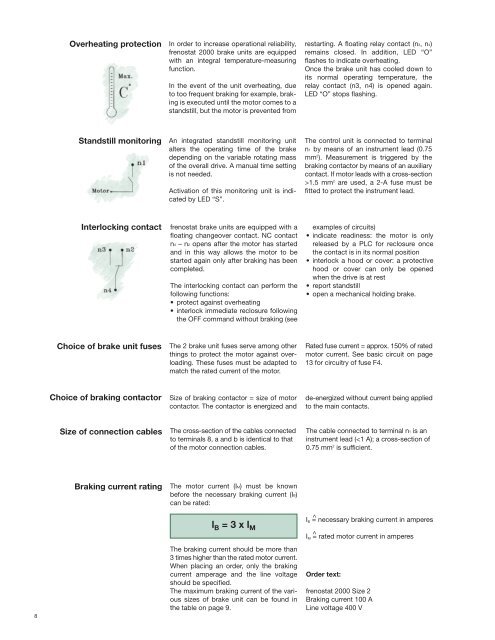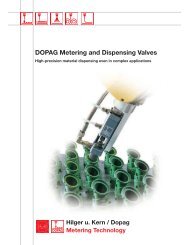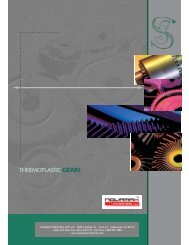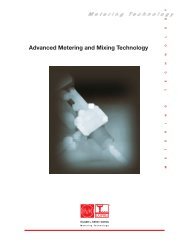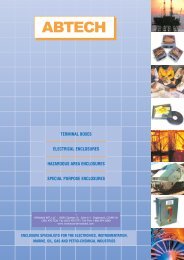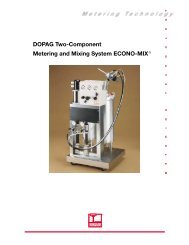frenomat und frenostat Electronic Brake Units
FrenoMat NX.pdf - NovaMax Industrial Intl
FrenoMat NX.pdf - NovaMax Industrial Intl
- No tags were found...
You also want an ePaper? Increase the reach of your titles
YUMPU automatically turns print PDFs into web optimized ePapers that Google loves.
Overheating protection<br />
In order to increase operational reliability,<br />
<strong>frenostat</strong> 2000 brake units are equipped<br />
with an integral temperature-measuring<br />
function.<br />
In the event of the unit overheating, due<br />
to too frequent braking for example, braking<br />
is executed until the motor comes to a<br />
standstill, but the motor is prevented from<br />
restarting. A floating relay contact (n3, n4)<br />
remains closed. In addition, LED “O”<br />
flashes to indicate overheating.<br />
Once the brake unit has cooled down to<br />
its normal operating temperature, the<br />
relay contact (n3, n4) is opened again.<br />
LED “O” stops flashing.<br />
Standstill monitoring<br />
An integrated standstill monitoring unit<br />
alters the operating time of the brake<br />
depending on the variable rotating mass<br />
of the overall drive. A manual time setting<br />
is not needed.<br />
Activation of this monitoring unit is indicated<br />
by LED “S”.<br />
The control unit is connected to terminal<br />
n1 by means of an instrument lead (0.75<br />
mm 2 ). Measurement is triggered by the<br />
braking contactor by means of an auxiliary<br />
contact. If motor leads with a cross-section<br />
>1.5 mm 2 are used, a 2-A fuse must be<br />
fitted to protect the instrument lead.<br />
Interlocking contact<br />
<strong>frenostat</strong> brake units are equipped with a<br />
floating changeover contact. NC contact<br />
n4 – n2 opens after the motor has started<br />
and in this way allows the motor to be<br />
started again only after braking has been<br />
completed.<br />
The interlocking contact can perform the<br />
following functions:<br />
• protect against overheating<br />
• interlock immediate reclosure following<br />
the OFF command without braking (see<br />
examples of circuits)<br />
• indicate readiness: the motor is only<br />
released by a PLC for reclosure once<br />
the contact is in its normal position<br />
• interlock a hood or cover: a protective<br />
hood or cover can only be opened<br />
when the drive is at rest<br />
• report standstill<br />
• open a mechanical holding brake.<br />
Choice of brake unit fuses<br />
The 2 brake unit fuses serve among other<br />
things to protect the motor against overloading.<br />
These fuses must be adapted to<br />
match the rated current of the motor.<br />
Rated fuse current = approx. 150% of rated<br />
motor current. See basic circuit on page<br />
13 for circuitry of fuse F4.<br />
Choice of braking contactor<br />
Size of braking contactor = size of motor<br />
contactor. The contactor is energized and<br />
de-energized without current being applied<br />
to the main contacts.<br />
Size of connection cables<br />
The cross-section of the cables connected<br />
to terminals 8, a and b is identical to that<br />
of the motor connection cables.<br />
The cable connected to terminal n1 is an<br />
instrument lead (


